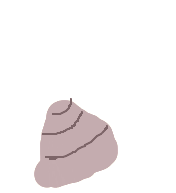Treatment of clay colored stool is dependent on effective diagnosis of the underlying condition that is causing the abnormal feces and then curing it as per standard medical procedures.
Clay Colored Stool – Pictures
Causes of clay colored stool
Some of the common causes of clay colored stool and accompanying symptoms are listed below:
• Viral hepatitis: It is a condition that is usually caused due to infection by hepatitis A, B, or C viruses and results in liver inflammation and swelling. Hepatitis C may eventually lead to liver disease. The infection may be chronic or acute.
Symptoms typically occur when there is some liver damage and not before. Besides clay colored stool, patients may experience jaundice, weight loss, pain in abdomen, flu-like symptoms, dark urine, appetite loss, and fatigue.
Viral hepatitis often resolves without medical treatment. It is also possible for the virus to remain in the body and cause persistent infection. Hence, doctors may treat severe infections with antiviral medications.
• Drug induced hepatitis: Certain drugs like oral contraceptives, NSAIDs, anabolic steroids, and certain antibiotics can cause liver swelling and inflammation as a side effect. Patients tend to suffer from clay colored stool and other symptoms. The condition disappears after the use of the culprit medication is stopped.
• Alcoholic hepatitis: In this, alcohol abuse or excessive intake of alcohol for prolonged periods (many years) can cause liver swelling and inflammation. Alcoholic hepatitis may eventually result in liver disease and/or liver failure.
Patients commonly experience symptoms like yellowing of the skin and sclera, jaundice, clay colored stool, and increased girth due to collection of fluid. Uncommonly, there may be weight loss, vomiting, nausea, tenderness and pain in abdomen, and appetite loss.
Patients need to completely avoid drinking alcohol because continuing the habit can increase the risk to liver damage and even fatality.
• Gallstones: They are hardened deposits of bile pigments and cholesterol that develop in the gallbladder and block the bile ducts. Gallstones may be caused due to reduced gallbladder movement, diet, body weight, and genetics.
Gallstones do not cause any symptoms. Some patients may suffer from gallbladder inflammation, clay colored stool, and pain in the back, abdomen, and/or right shoulder.
Gallstones can sometimes be dissolved with medications. If issue persists, or in case of excessively large gallstones, doctors may suggest surgical removal of the stones.
• Biliary cirrhosis: It is a life-threatening condition that causes irritation or inflammation of the bile ducts present in the liver and consequently block the free flow of bile to the intestines.
Biliary cirrhosis is usually asymptomatic, but some patients may elicit clay colored stool, dry eyes and mouth, fatigue, jaundice, itching skin, muscle or bone pain, abdominal pain, osteoporosis, elevated cholesterol, and swollen feet and ankles.
Doctors are not aware of the exact cause and no cure has been found as yet. As per National Institutes of Health, the condition typically causes liver failure in about 25 percent of the patients after 10 years with the disease.
• Sclerosing cholangitis: It refers to scarring or inflammation of the bile ducts. Doctors do not know the exact cause, but genetics may be one probable cause. Bile duct damage can sometimes be corrected and repaired via medicines and/or surgery.
• Biliary stricture: It refers to constriction of the bile ducts which may occur after surgical removal of the gallbladder.
Patients may experience symptoms like clay colored stool, jaundice, vomiting, itchiness, nausea, chills, fever, and pain in upper right abdomen.
The condition can be treated via stenting or other surgeries that widen the bile ducts and allow the free passage of bile to the intestines.
Biliary system structural defects: The biliary system is made up of organs like the pancreas, liver, and gallbladder. Any kind of congenital structural defects of this system can adversely affect the free passage of bile and cause clay colored stool and other problems. The defects can be repaired via surgery.
• Bile duct tumors: Malignant or non-cancerous tumors may develop in the biliary system and cause liver inflammation or cause problems in the free passage of bile.
Bile duct tumor that cause bile obstruction often result in jaundice. Other symptoms are appetite loss, weight loss, clay colored stool, pain in right flank, itchiness, and breaks in skin which may cause excessive blood loss. Surgery can remove such tumors. Cancerous tumors may require additional treatments like radiation therapy and/or chemotherapy.
• Jaundice: It is a condition that occurs due to accumulation of bile in the body. Patients may exhibit symptoms like clay colored stool and yellowing of the skin and the sclera, etc. Jaundice can be sign of liver disease and hence patients need to seek immediate medical attention.

